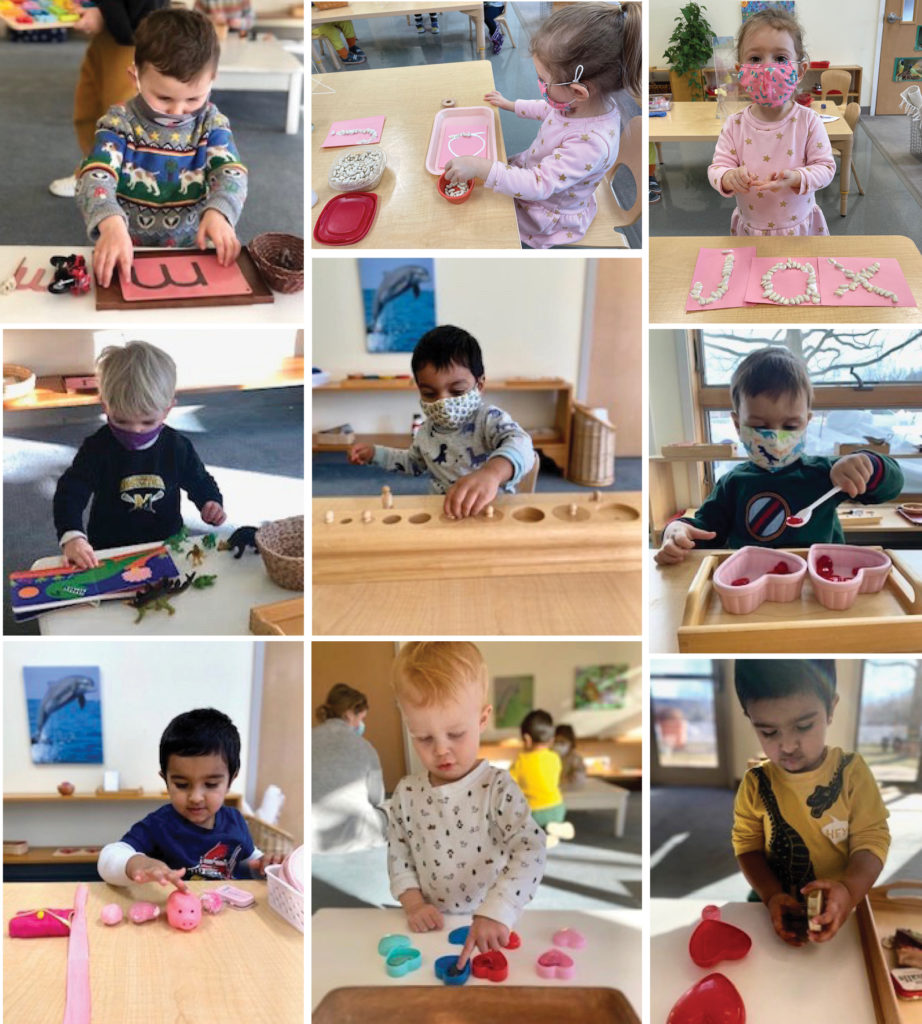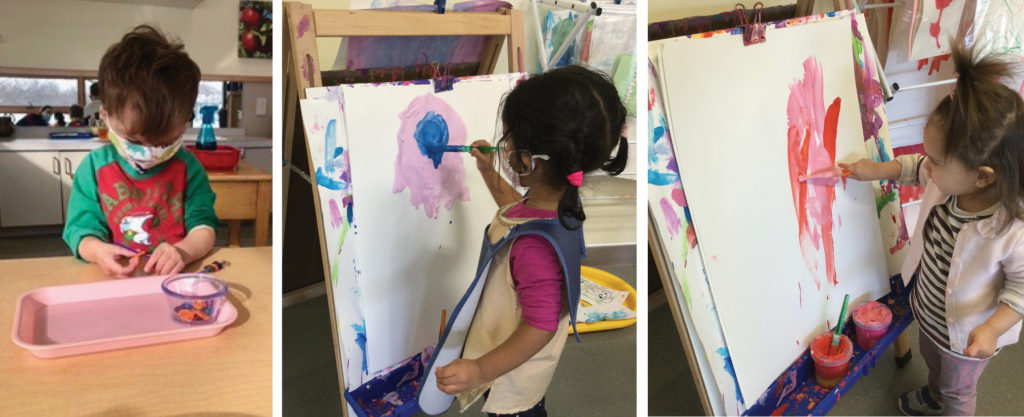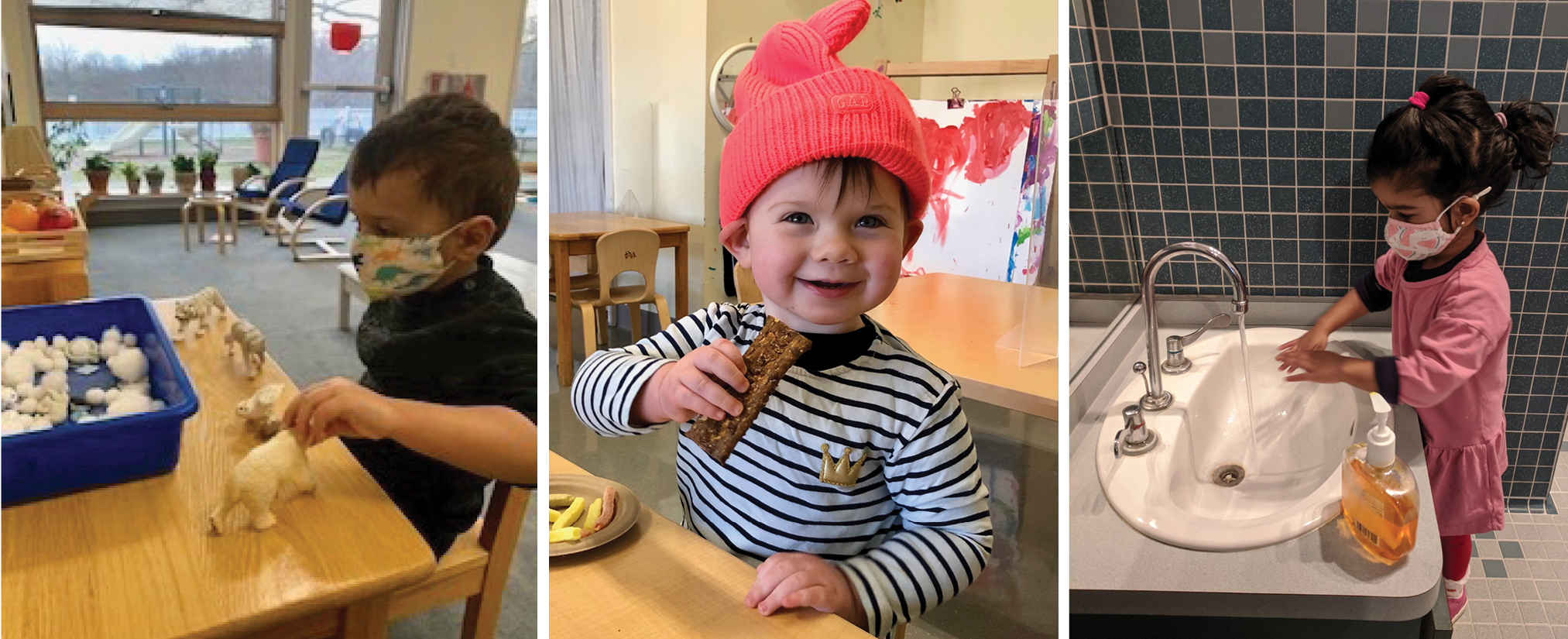
Our Toddler program, designed for children from 18 months through 3 years, lays the foundation for the adult each child will become. Activities are purposefully designed to develop a sense of wonder, natural curiosity, motor skills, self-esteem, social skills, and cognitive processes.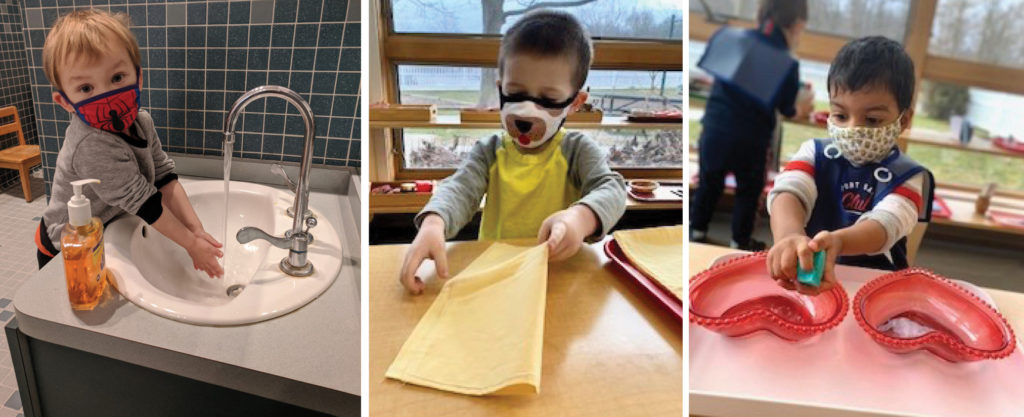 Practical Life
Practical Life
Dr. Maria Montessori knew this area of the classroom would have many benefits for a child’s development. Practical life helps children learn to take care of themselves and the environment through growing independence.
- Bead Stringing, taking a small bead and working to guide it through a very long string using the pincer grip. This work helps the child strengthen fine motor development, concentration, and eye-hand coordination.
- Water Pouring uses eye-hand coordination and concentration to carefully control the water as the child pours it between the pitchers. This develops confidence in their ability to do things for themselves.
- Whisking Work is a Montessori activity that contains numerous steps. This helps the child to develop independence as they retrieve the water with the pitcher. It also strengthens eye-hand coordination as well as his concentration.
- Plant Watering helps the child make a connection with their environment and develop a love and respect for nature.
- Sweeping activities develop focus, eye-hand coordination, and a sense of order to complete this multistep work. It also is helpful in caring for the environment and strengthening independence.
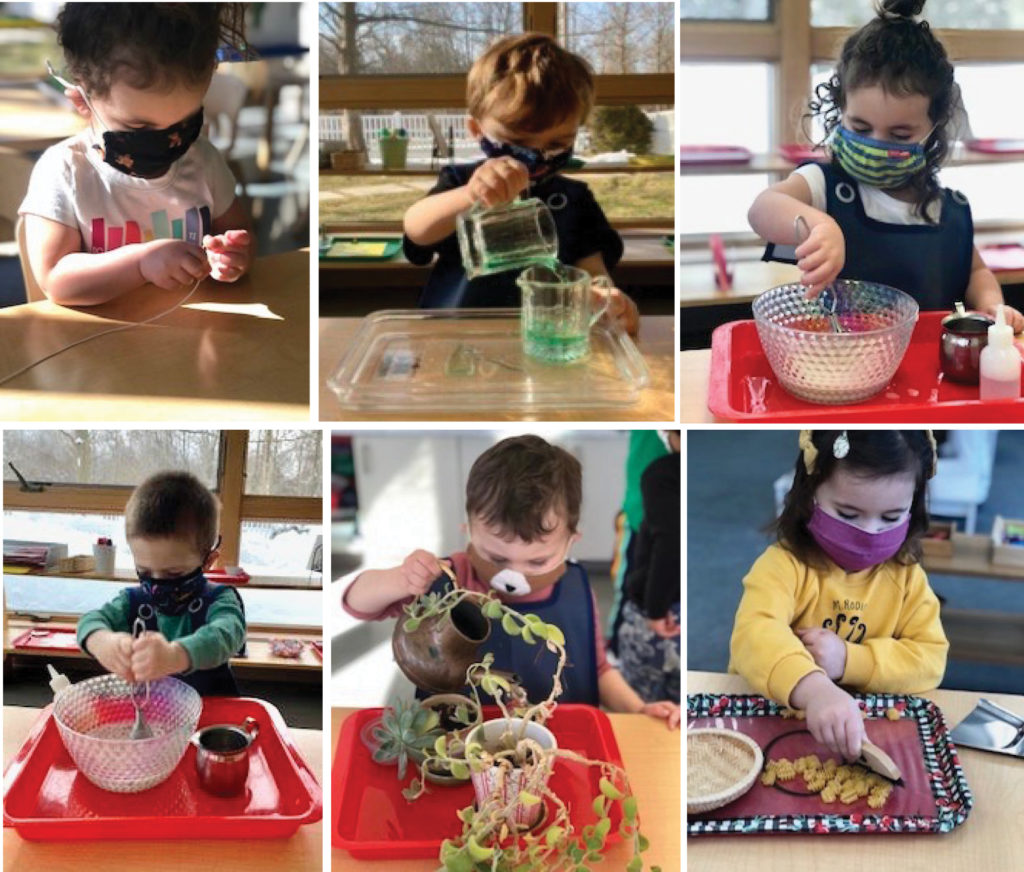
Sensorial and Language Work
Dr. Maria Montessori believed that children learn through using their hands. Developing new vocabulary by touching and seeing concrete objects.
- Sandpaper letters: Working with a sandpaper paper letter, children learn the sound and make connections between the sound and the objects in the photo. This is the first step to learning letters/ phonics in a Montessori classroom. It is a sensorial approach where the child is exposed to the letter through his sense of touch, developing a muscular understanding, which in turn will help him write the letter later on.
- For the Color Matching activity, the child is learning to discriminate, match the colors, recognize, name the colors, and develop a sense of order.
- Knobbed Cylinders: Dr. Maria Montessori created this work to help children develop and use their senses of sight and touch. The knobbed cylinders help the chid to learn size discrimination as he sorts from the biggest to the smallest. It also helps strengthen the pincer grip, needed for writing, builds his fine motor skills, and strengthens eye-hand coordination.
- Open and Close: The child selects a container and holds it with one hand and twists off the lid with the other. This work helps develop his independence, fine motor control, and eye-hand coordination.
- Spooning Activity: This work develops concentration and independence, using the spoon to transfer the material from one bowl to another. It strengthens eye-hand coordination and fine motor control.
